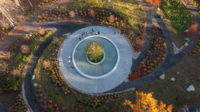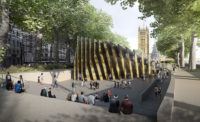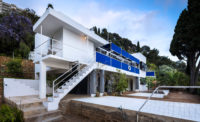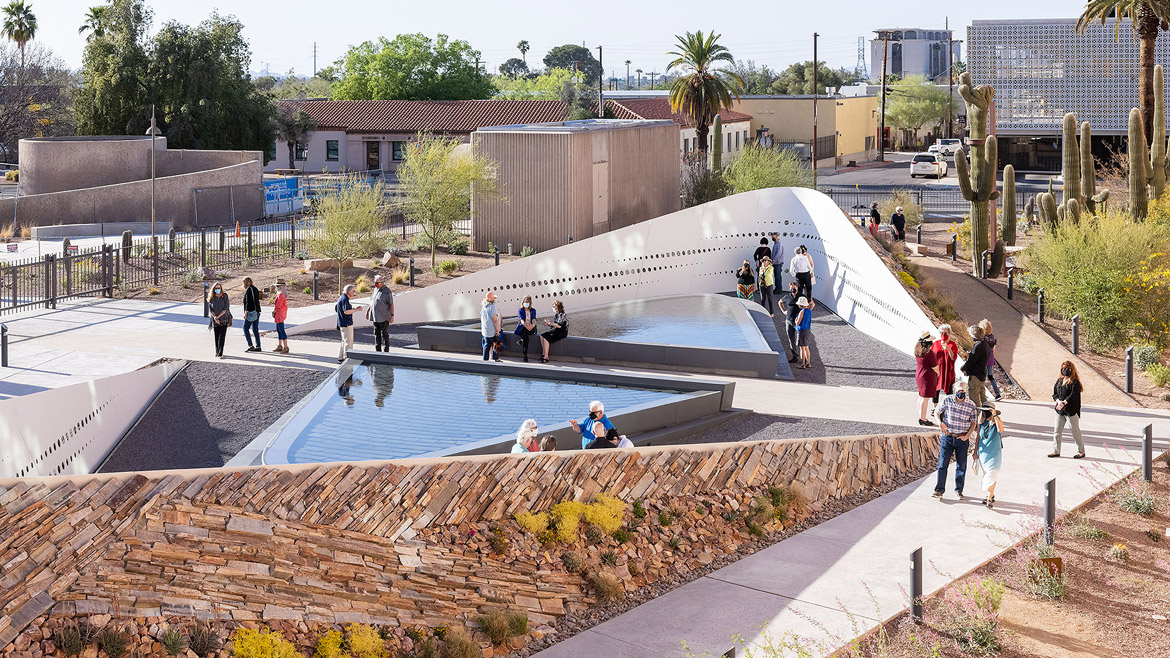Tucson Commemorates Shooting 10 Years Later










"Gun violence in this country is an epidemic,” said President Joe Biden on April 8, as he outlined executive actions to curb that grim reality. In just one week in March, eight people—including six Asian women—were killed by a gunman in Atlanta, and 10 people were shot and died in a Boulder, Colorado, grocery store.
Now the people of Tucson, Arizona, have a memorial to commemorate another infamous date in America’s seemingly never-ending story of gun violence: January 8, 2011, when 19 people were gunned down by one shooter while gathering in a shopping center to meet their U.S. representative, Gabrielle (Gabby) Giffords. Among the six people who died that day were 9-year-old Christina-Taylor Green and Giffords’ aide Gabe Zimmerman—the first Congressional staffer to be killed in the line of duty. Giffords narrowly survived the attempted assassination with severe brain damage, and retired from her office to advocate against gun violence.
“All these years, Gabby has been fighting for gun control. When is it ever going to end?” said architect and landscape architect Tina Chee, in an emotional interview, as she reflected on Giffords’s encounter with another fearsome event when her husband, Arizona’s new senator, Mark Kelly, was in the Capitol on January 6 this year, as the violent mob attacked Congress to try to prevent the certification of the presidential election. Chee, along with her husband, Marc Salette, of the Glendale, California, firm Chee Salette, won a competition to design the memorial with visual artist Rebeca Méndez. Called The Embrace, it opened exactly 10 years after the shooting, with Giffords and Kelly attending its dedication.
With its two sharply curving forms that round like arms embracing, the memorial is meant to symbolize community and hope. Its pearlescent inner walls, of powder-coated steel panels, slant outward toward the sky, while its outer shell is composed of berms covered with local stones and plants, which will evolve and change with the seasons and are already attracting wildlife. Hundreds of small circles perforate the inner walls to reflect a breath, a heartbeat, a shot, a hole.
After meeting with the families and friends of the deceased and hearing their stories, as well as researching the art and history of the area, Méndez created small symbols and icons for many of the openings— such as scales of justice, a butterfly (that was Green’s last drawing), a bighorn sheep, and a cactus—to represent Tucson’s victims: not only those from the 2011 shootings, but people who, over time, were lost to racial violence or perished in the unforgiving Sonoran Desert.
Nestled between the two boomerang-shaped landscape formations of the memorial is a pair of triangular reflecting pools, bisected by a walkway leading to the entrance of Tucson’s 1929 ornate pink stucco Mission Revival courthouse. The gentle flow of water creates a calming effect for those seated on the precast-concrete benches lining the pools—now a place of gathering and contemplation. The memorial is situated in El Presidio Park, near other memorials that commemorate the Vietnam War and World War II—this one a reminder that some battles are fought at home.
Credits
Team:
Chee Salette and Rebeca Méndez
Local Landscape Architect:
McGann & Associates
Historian and Community Outreach:
Jackie Kain, Adam Eeuwens
Lighting Designer:
Wilfried Kramb
Structural Engineers:
Schneider
Geotechnical Engineer:
Terracon
Civil and Electrical Engineer:
GLHN
General Contractor:
Chasse Building Team
Steel Fabricator and Installer:
Caid Industries
Water Feature Contractor:
Dirty Paws
Masonry:
Kerr Masonry & Sun Valley Masonry
Precast Concrete Fabricator:
QCP
Electrical:
RC Lurie
Landscaping:
Santa Rita Landscaping & Durazo Landscaping









